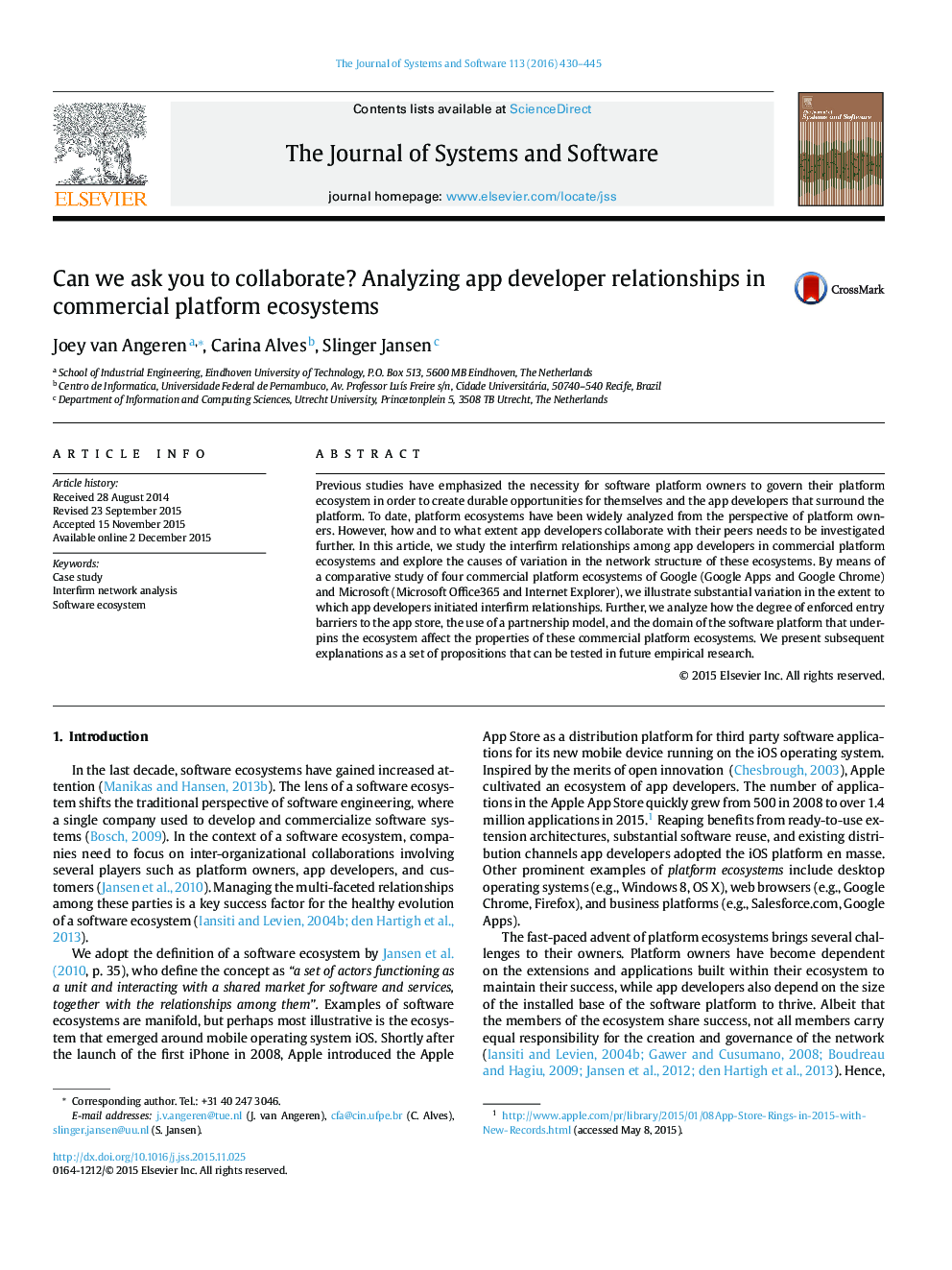| Article ID | Journal | Published Year | Pages | File Type |
|---|---|---|---|---|
| 459261 | Journal of Systems and Software | 2016 | 16 Pages |
•Comparative case studies of commercial platform ecosystems of Google and Microsoft.•There is substantial variation in the network topology of the ecosystems studied.•Lower entry barriers will be related to an increase in the number of complementors.•The use of a partnership model will be related to greater network density.•Customer demand for related applications will be related to greater network density.
Previous studies have emphasized the necessity for software platform owners to govern their platform ecosystem in order to create durable opportunities for themselves and the app developers that surround the platform. To date, platform ecosystems have been widely analyzed from the perspective of platform owners. However, how and to what extent app developers collaborate with their peers needs to be investigated further. In this article, we study the interfirm relationships among app developers in commercial platform ecosystems and explore the causes of variation in the network structure of these ecosystems. By means of a comparative study of four commercial platform ecosystems of Google (Google Apps and Google Chrome) and Microsoft (Microsoft Office365 and Internet Explorer), we illustrate substantial variation in the extent to which app developers initiated interfirm relationships. Further, we analyze how the degree of enforced entry barriers to the app store, the use of a partnership model, and the domain of the software platform that underpins the ecosystem affect the properties of these commercial platform ecosystems. We present subsequent explanations as a set of propositions that can be tested in future empirical research.
